-
 Bitcoin
Bitcoin $81,801.3998
-4.88% -
 Ethereum
Ethereum $1,783.4899
-5.99% -
 Tether USDt
Tether USDt $0.9995
0.00% -
 XRP
XRP $2.0414
-4.17% -
 BNB
BNB $587.6986
-2.45% -
 USDC
USDC $0.9999
0.03% -
 Solana
Solana $115.2385
-10.95% -
 Dogecoin
Dogecoin $0.1582
-8.40% -
 Cardano
Cardano $0.6402
-6.21% -
 TRON
TRON $0.2358
-0.95% -
 Toncoin
Toncoin $3.5762
-9.76% -
 UNUS SED LEO
UNUS SED LEO $9.3946
-0.30% -
 Chainlink
Chainlink $12.6270
-8.73% -
 Stellar
Stellar $0.2571
-4.44% -
 Avalanche
Avalanche $17.9106
-6.91% -
 Sui
Sui $2.2118
-10.25% -
 Shiba Inu
Shiba Inu $0.0...01214
-3.68% -
 Hedera
Hedera $0.1605
-7.04% -
 Polkadot
Polkadot $4.0102
-2.57% -
 Litecoin
Litecoin $82.1077
-4.40% -
 MANTRA
MANTRA $6.3939
-0.80% -
 Bitcoin Cash
Bitcoin Cash $293.5150
-4.57% -
 Dai
Dai $0.9998
0.02% -
 Bitget Token
Bitget Token $4.4590
-2.70% -
 Ethena USDe
Ethena USDe $0.9994
-0.05% -
 Pi
Pi $0.5769
-14.95% -
 Monero
Monero $209.6337
-5.00% -
 Hyperliquid
Hyperliquid $11.4631
-15.12% -
 Uniswap
Uniswap $5.7471
-7.46% -
 Aptos
Aptos $4.9953
-6.98%
How can the NFT secondary market prevent fraud and money laundering?
The NFT secondary market can prevent fraud and money laundering through identity verification, transaction monitoring, blockchain technology, and collaboration with regulatory bodies.
Apr 03, 2025 at 08:35 am
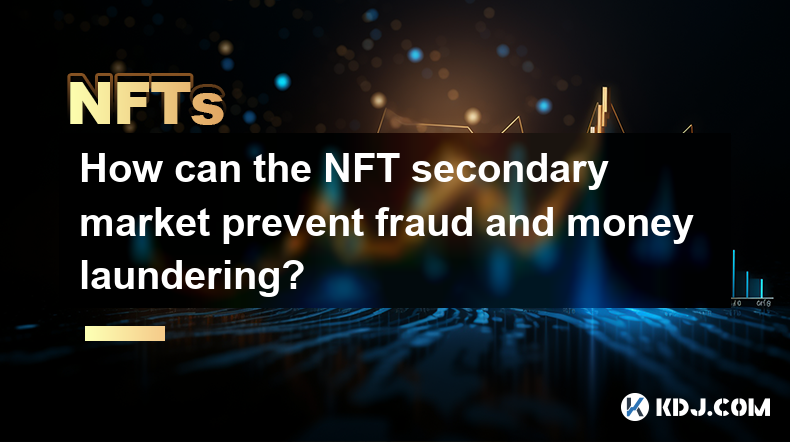
The NFT secondary market has become a thriving hub for digital art and collectibles, but it also faces challenges in preventing fraud and money laundering. To tackle these issues, the market can implement various strategies and technologies to ensure a safer and more transparent trading environment. This article will explore how the NFT secondary market can prevent fraud and money laundering, focusing on key areas such as identity verification, transaction monitoring, and the use of blockchain technology.
Identity Verification
One of the primary steps to prevent fraud and money laundering in the NFT secondary market is to implement robust identity verification processes. By ensuring that all participants in the market are verified, the risk of fraudulent activities can be significantly reduced.
- Know Your Customer (KYC) Procedures: NFT marketplaces can adopt KYC procedures to verify the identity of users. This involves collecting personal information such as name, address, and government-issued ID. By doing so, marketplaces can ensure that only legitimate users participate in transactions.
- Anti-Money Laundering (AML) Compliance: In addition to KYC, AML compliance is crucial. This involves monitoring transactions for suspicious activities and reporting them to the relevant authorities. By adhering to AML regulations, NFT marketplaces can deter money laundering attempts.
- Multi-factor Authentication (MFA): Implementing MFA adds an extra layer of security to user accounts. This can prevent unauthorized access and reduce the risk of fraudulent activities.
Transaction Monitoring
Monitoring transactions is another essential aspect of preventing fraud and money laundering in the NFT secondary market. By closely tracking transactions, suspicious activities can be identified and addressed promptly.
- Real-time Monitoring: NFT marketplaces can use real-time monitoring tools to track transactions as they happen. This allows for the immediate detection of any unusual patterns or activities that may indicate fraud or money laundering.
- Suspicious Activity Reports (SARs): If any suspicious activities are detected, marketplaces should file SARs with the appropriate financial authorities. This helps in the broader effort to combat money laundering and other financial crimes.
- Transaction Limits: Setting transaction limits can help prevent large-scale fraudulent activities. By capping the amount that can be transacted within a certain period, marketplaces can reduce the risk of significant financial losses due to fraud.
Blockchain Technology
Blockchain technology, the backbone of NFTs, offers several features that can help prevent fraud and money laundering in the secondary market. Its inherent transparency and immutability can be leveraged to create a more secure trading environment.
- Immutable Records: Once a transaction is recorded on the blockchain, it cannot be altered. This immutability ensures that all transactions are permanent and verifiable, making it difficult for fraudsters to manipulate transaction records.
- Public Ledgers: The public nature of blockchain ledgers allows for greater transparency. All transactions are visible to anyone, which can deter fraudulent activities as participants know their actions are being monitored.
- Smart Contracts: Smart contracts can automate the enforcement of rules and regulations within the NFT marketplace. For instance, they can automatically flag transactions that exceed certain thresholds or exhibit suspicious patterns, thus enhancing the ability to detect and prevent fraud and money laundering.
Collaboration with Regulatory Bodies
Collaboration with regulatory bodies is crucial for the NFT secondary market to effectively combat fraud and money laundering. By working closely with these entities, marketplaces can ensure compliance with existing regulations and contribute to the development of new standards.
- Regulatory Compliance: NFT marketplaces should adhere to existing financial regulations, such as those related to KYC and AML. This not only helps in preventing fraud but also builds trust among users.
- Information Sharing: By sharing information with regulatory bodies, NFT marketplaces can contribute to the broader effort to combat financial crimes. This can include sharing data on suspicious transactions or collaborating on investigations.
- Policy Development: NFT marketplaces can also play a role in shaping future regulations. By providing input on the unique aspects of the NFT market, they can help develop policies that are both effective and tailored to the needs of the industry.
User Education
Educating users about the risks of fraud and money laundering is another important strategy for the NFT secondary market. By increasing awareness, users can be more vigilant and take steps to protect themselves.
- Awareness Campaigns: NFT marketplaces can run awareness campaigns to educate users about common fraud schemes and money laundering tactics. This can include information on how to spot suspicious activities and what steps to take if they encounter fraud.
- Best Practices Guides: Providing users with guides on best practices for secure trading can help them protect their assets. This can include tips on securing their accounts, using strong passwords, and being cautious of unsolicited offers.
- Community Engagement: Engaging with the community through forums, webinars, and social media can foster a culture of vigilance and cooperation. By encouraging users to report suspicious activities, marketplaces can enhance their ability to detect and prevent fraud.
Technological Solutions
In addition to the strategies mentioned above, the NFT secondary market can leverage various technological solutions to prevent fraud and money laundering. These technologies can enhance security and improve the overall integrity of the market.
- Artificial Intelligence (AI) and Machine Learning (ML): AI and ML can be used to analyze transaction patterns and detect anomalies that may indicate fraud or money laundering. These technologies can learn from historical data and improve their detection capabilities over time.
- Cryptographic Security Measures: Implementing strong cryptographic measures can protect user data and transactions from unauthorized access. This includes using encryption to secure communications and storing sensitive information securely.
- Decentralized Identity Solutions: Decentralized identity solutions can provide a more secure and privacy-preserving way of verifying user identities. By using decentralized identifiers (DIDs), users can maintain control over their personal information while still meeting verification requirements.
Case Studies
Examining case studies of successful fraud and money laundering prevention in the NFT secondary market can provide valuable insights into effective strategies. By learning from these examples, marketplaces can adapt and improve their own approaches.
- OpenSea's KYC Implementation: OpenSea, one of the largest NFT marketplaces, implemented KYC procedures to enhance security and prevent fraud. This move helped in verifying user identities and reducing the risk of fraudulent activities.
- Rarible's Transaction Monitoring: Rarible, another prominent NFT marketplace, introduced advanced transaction monitoring tools to detect and prevent suspicious activities. This proactive approach has been effective in identifying potential fraud and money laundering attempts.
- Nifty Gateway's Collaboration with Regulatory Bodies: Nifty Gateway has worked closely with regulatory bodies to ensure compliance with financial regulations. This collaboration has helped in creating a more secure and transparent trading environment.
Challenges and Future Directions
While the strategies outlined above can significantly enhance the security of the NFT secondary market, there are still challenges to overcome. Understanding these challenges and exploring future directions can help in continuously improving fraud and money laundering prevention efforts.
- Regulatory Uncertainty: The NFT market is still relatively new, and regulatory frameworks are still evolving. This uncertainty can pose challenges for marketplaces in ensuring compliance with existing and future regulations.
- Scalability: As the NFT market grows, ensuring the scalability of fraud and money laundering prevention measures becomes crucial. Marketplaces need to find ways to maintain security without compromising on user experience.
- Technological Advancements: Keeping up with technological advancements is essential for staying ahead of fraudsters. Marketplaces need to continuously invest in new technologies and adapt their strategies to address emerging threats.
FAQs
Q: What is the role of KYC in preventing fraud in the NFT secondary market?
A: KYC plays a crucial role in preventing fraud by verifying the identity of users. By ensuring that only legitimate users participate in transactions, KYC procedures help reduce the risk of fraudulent activities. This includes collecting personal information such as name, address, and government-issued ID to confirm user identities.
Q: How does transaction monitoring help in detecting money laundering in the NFT market?
A: Transaction monitoring helps detect money laundering by tracking transactions in real-time and identifying any unusual patterns or activities. This includes filing Suspicious Activity Reports (SARs) with financial authorities when suspicious activities are detected and setting transaction limits to prevent large-scale fraudulent activities.
Q: Can blockchain technology alone prevent fraud and money laundering in the NFT secondary market?
A: While blockchain technology offers features like immutability and transparency that can help prevent fraud and money laundering, it is not sufficient on its own. It needs to be complemented by other strategies such as identity verification, transaction monitoring, and collaboration with regulatory bodies to create a comprehensive prevention framework.
Q: Why is user education important in preventing fraud in the NFT market?
A: User education is important because it increases awareness about the risks of fraud and money laundering. By educating users on how to spot suspicious activities and follow best practices for secure trading, marketplaces can empower users to protect themselves and contribute to a safer trading environment.
Q: What are some technological solutions that can be used to prevent fraud in the NFT secondary market?
A: Technological solutions include using AI and ML to analyze transaction patterns, implementing cryptographic security measures to protect user data, and utilizing decentralized identity solutions for secure and privacy-preserving identity verification. These technologies can enhance the security and integrity of the NFT market.
Disclaimer:info@kdj.com
The information provided is not trading advice. kdj.com does not assume any responsibility for any investments made based on the information provided in this article. Cryptocurrencies are highly volatile and it is highly recommended that you invest with caution after thorough research!
If you believe that the content used on this website infringes your copyright, please contact us immediately (info@kdj.com) and we will delete it promptly.
- title: Bitcoin (BTC) Staring Primed to Move a Leg Up as Technical Indicators Remain Bullish: Analyst
- 2025-04-04 04:25:11
- The Truth Behind Crypto Presales – A Good Investment To Turn $300 Into Millions?
- 2025-04-04 04:25:11
- SUI Signals Bullish Reversal: Rally Expected if Price Closes Above This Key Level
- 2025-04-04 04:20:12
- Rexas Finance (RXS) Tokenizes Real-World Assets, Opening New Markets for Crypto Investors
- 2025-04-04 04:20:12
- 5 Crypto Projects That Are Quickly Gaining Attention This April
- 2025-04-04 04:15:11
- Ruvi AI (RUVI) Is Turning Heads as It Promises to Be the Game-Changing Platform for Decentralized AI and Blockchain Integration
- 2025-04-04 04:15:11
Related knowledge
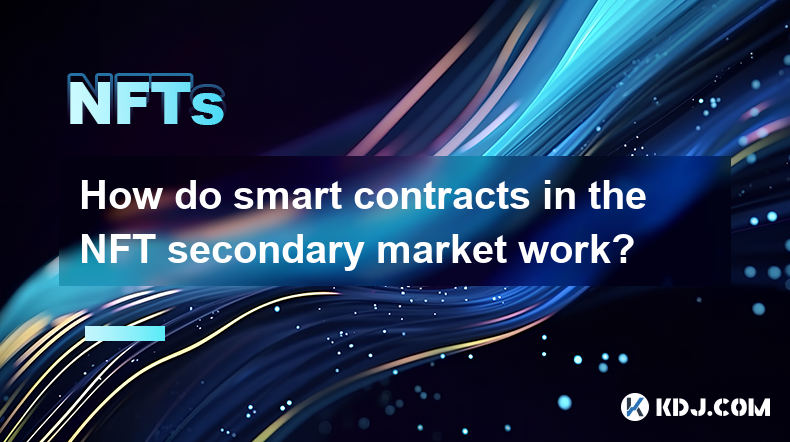
How do smart contracts in the NFT secondary market work?
Apr 03,2025 at 07:14am
Smart contracts play a pivotal role in the NFT secondary market, facilitating seamless transactions and enforcing predefined rules. These self-executing contracts with the terms of the agreement directly written into code are stored on the blockchain. In the context of NFTs, smart contracts automate the buying, selling, and transferring of digital asset...

How can the NFT secondary market prevent fraud and money laundering?
Apr 03,2025 at 08:35am
The NFT secondary market has become a thriving hub for digital art and collectibles, but it also faces challenges in preventing fraud and money laundering. To tackle these issues, the market can implement various strategies and technologies to ensure a safer and more transparent trading environment. This article will explore how the NFT secondary market...
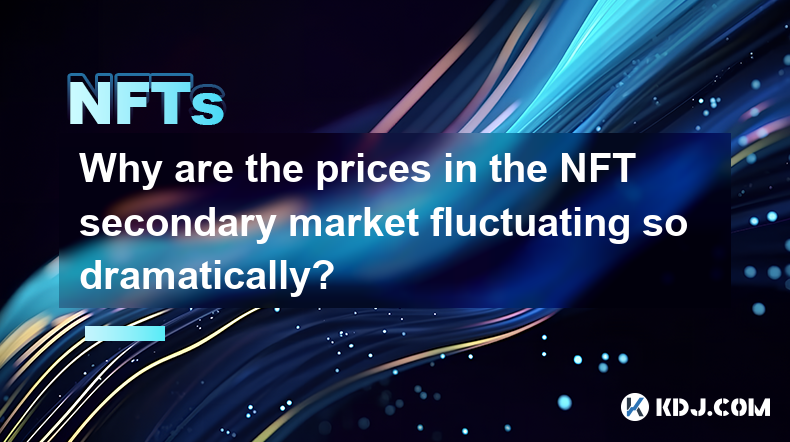
Why are the prices in the NFT secondary market fluctuating so dramatically?
Apr 03,2025 at 10:35pm
The NFT secondary market has been experiencing dramatic price fluctuations, leaving many in the cryptocurrency community puzzled and curious. To understand this phenomenon, it's essential to delve into the factors driving these price movements. From the impact of market sentiment and celebrity endorsements to the role of speculation and the unique natur...
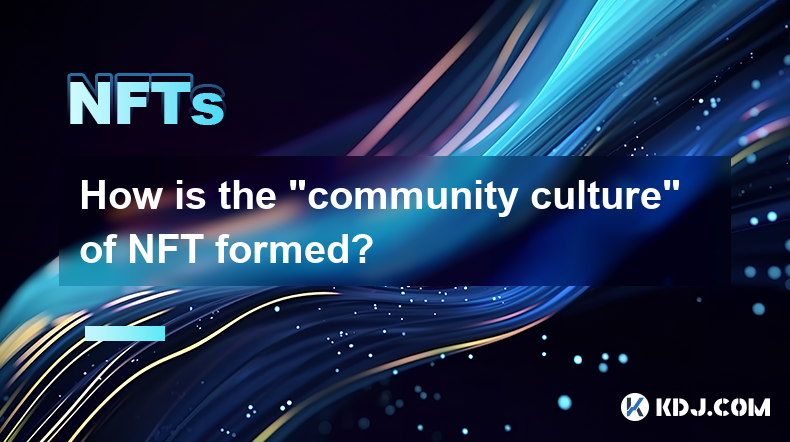
How is the “community culture” of NFT formed?
Apr 03,2025 at 11:07am
The formation of the 'community culture' within the NFT (Non-Fungible Token) space is a fascinating and multi-faceted process. It involves various elements such as shared interests, active engagement, and the creation of a sense of belonging among members. NFT communities often revolve around specific projects or artists, fostering a unique environment ...
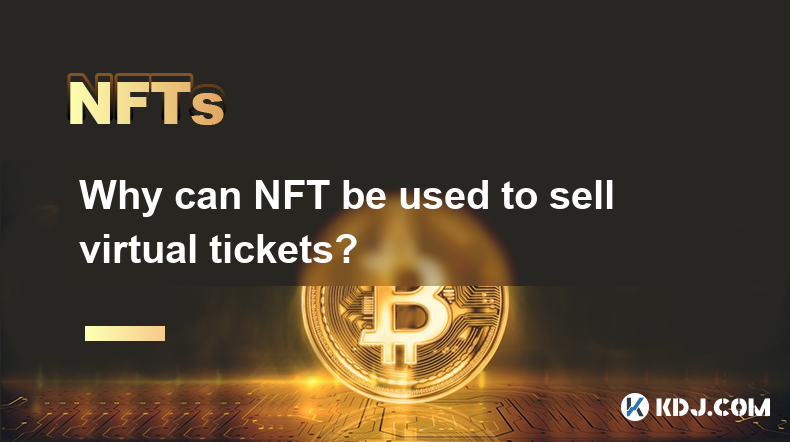
Why can NFT be used to sell virtual tickets?
Apr 03,2025 at 01:35pm
NFTs, or Non-Fungible Tokens, have revolutionized the way we think about digital ownership and value, particularly in the realm of virtual tickets. The primary reason NFTs can be used to sell virtual tickets is their unique nature. Unlike cryptocurrencies such as Bitcoin or Ethereum, which are fungible and can be exchanged on a one-to-one basis, NFTs ar...

What does “cross-chain” of NFT mean?
Apr 03,2025 at 11:14pm
The term 'cross-chain' in the context of NFTs refers to the ability of non-fungible tokens to be transferred and utilized across different blockchain networks. This interoperability is crucial for expanding the utility and accessibility of NFTs, allowing them to be used in various ecosystems and applications beyond their original blockchain. Cross-chain...

How do smart contracts in the NFT secondary market work?
Apr 03,2025 at 07:14am
Smart contracts play a pivotal role in the NFT secondary market, facilitating seamless transactions and enforcing predefined rules. These self-executing contracts with the terms of the agreement directly written into code are stored on the blockchain. In the context of NFTs, smart contracts automate the buying, selling, and transferring of digital asset...

How can the NFT secondary market prevent fraud and money laundering?
Apr 03,2025 at 08:35am
The NFT secondary market has become a thriving hub for digital art and collectibles, but it also faces challenges in preventing fraud and money laundering. To tackle these issues, the market can implement various strategies and technologies to ensure a safer and more transparent trading environment. This article will explore how the NFT secondary market...

Why are the prices in the NFT secondary market fluctuating so dramatically?
Apr 03,2025 at 10:35pm
The NFT secondary market has been experiencing dramatic price fluctuations, leaving many in the cryptocurrency community puzzled and curious. To understand this phenomenon, it's essential to delve into the factors driving these price movements. From the impact of market sentiment and celebrity endorsements to the role of speculation and the unique natur...

How is the “community culture” of NFT formed?
Apr 03,2025 at 11:07am
The formation of the 'community culture' within the NFT (Non-Fungible Token) space is a fascinating and multi-faceted process. It involves various elements such as shared interests, active engagement, and the creation of a sense of belonging among members. NFT communities often revolve around specific projects or artists, fostering a unique environment ...

Why can NFT be used to sell virtual tickets?
Apr 03,2025 at 01:35pm
NFTs, or Non-Fungible Tokens, have revolutionized the way we think about digital ownership and value, particularly in the realm of virtual tickets. The primary reason NFTs can be used to sell virtual tickets is their unique nature. Unlike cryptocurrencies such as Bitcoin or Ethereum, which are fungible and can be exchanged on a one-to-one basis, NFTs ar...

What does “cross-chain” of NFT mean?
Apr 03,2025 at 11:14pm
The term 'cross-chain' in the context of NFTs refers to the ability of non-fungible tokens to be transferred and utilized across different blockchain networks. This interoperability is crucial for expanding the utility and accessibility of NFTs, allowing them to be used in various ecosystems and applications beyond their original blockchain. Cross-chain...
See all articles






















































































